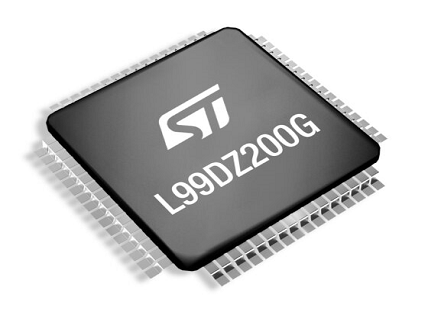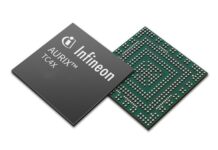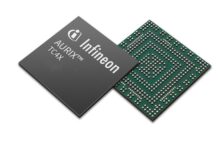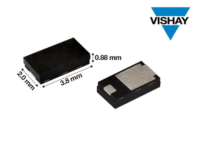
The L99DZ200G is ST’s first automotive front door driver to include two H-bridge drivers and four integrated half-bridges for up to 7 A loads, thus enabling it to power all front door electronics as well as a rear window and a powered trunk. We also improved its robustness by optimizing its overcurrent recovery and short-circuit detection. The new part is also our first device in this product category to be SAE J2962-1/2 compliant. Finally, the new Generator Mode deals with edge cases that produce voltage spikes at the end of the production lines. Put simply, the L99DZ200G is a new solution to the design challenges that automotive module makers face today. Between high demands and the need to lower prices, teams must reduce their bill of materials and simplify their PCBs. By integrating a second full-bridge and improving its robustness, the new device can do more with fewer components.
What’s in a Front Door?
It’s easy to underestimate all the electronics that live inside a front door, whether on the driver or passenger side. Most people think about powered windows and locks. However, many carmakers now include systems to control side mirrors and heaters. There are also lighting mechanisms, blind spot warnings, and powered doors that open and close automatically. Interestingly, a device like the L99DZ200G also handles wake-up features. Instead of the microcontroller waking other devices, it’s the front door driver that activates the processor. Hence, the device sits at the center of the front door zone, which explains why optimizing it will have a snowball effect. Let us, therefore, explore all the ways the L99DZ200G reduces the BOM and simplify the PCB.
L99DZ200G: Doing More With Fewer Drivers
Front Drive Rear Topology or How to Control the Rear Window with a Front Door Driver

Carmakers traditionally design four-door zones, two at the front and two at the back, which can get complex and costly. Additionally, module makers must find components that fit a wide range of constraints. Some companies prioritize a LIN bus, while others rely more heavily on a CAN interface. Similarly, some manufacturers want to offer many electronic features, whereas others chose a barebone approach. As a result, when ST designed the previous generation of front door drivers, the L99DZ100G, the goal was to provide flexibility. The new L99DZ200G perpetuates this legacy while also offering new solutions.
Talking with engineers, ST learned that many are looking to create more efficient door zones that are simpler to design and use fewer components. Hence, the new L99DZ200G doubles the number of full-bridges to enable the creation of a new topology called Front Drive Rear. Put simply, the device drives external MOSFETs to sustain the current needed to move a rear window up and down. It thus cuts the number of zones by half since only front door zones are necessary. Moreover, the new device still has the same size and package as the L99DZ100G, which makes the transition to the new model smoother and helps save space.
Driving the Powered Trunk or How the Front Door Driver Can Also Manage Three Motors
Another fundamental challenge that designers face stems from the number of parts they must qualify. The more components on a PCB, the longer it takes to qualify everything. Therefore, repurposing devices offers enormous time and cost savings since it becomes possible to buy larger volumes. It’s the reason why we wrote a technical note explaining how the two H-bridges of the L99DZ200G can drive the three DC motors of a powered trunk. Two motors work simultaneously to move the trunk up or down while the third works the latch. The documentation lists the truth tables for single and dual modes as well as a reference example. Adopting the new device thus hastens developments by allowing engineers to repurpose it and rely on our documentation.
L99DZ200G: Doing More With Simpler Designs
Generator Mode or How to Deal with Voltage Spikes From Trunk Handling
Designing an automotive-grade module often demands that engineers plan for critical edge cases that could cause damages. For instance, carmakers traditionally have to protect their powered trunk drivers from manual handling at the end of the manufacturing process. Indeed, when machines or workers manually lift the trunk, it automatically spins the motors and turns them into a generator that creates a voltage spike on the driver’s pin, which can then destroy the component. To solve this problem, engineers traditionally add components to protect the driver. The L99DZ200G offers a new solution in the form of a Generator Mode, which turns on the device’s low-side external MOSFETs when the motors start to act as a generator. When that happens, the device locks the motors to prevent a voltage spike. Hence, designers no longer have to add external components to deal with this particular situation.
Improving Robustness or How to Plan for Harsh Conditions
The L99DZ200G includes other features that increase its robustness, further reducing the need for additional components. For instance, supporting the SAE J2962-1/2 (1 for LIN and 2 for CAN) standards means that the device tolerates 15 kV on its CAN pin and 25 kV on its LIN pin. Similarly, we integrated two independent voltage regulators. Engineers can use one to follow the other to offer better accuracy or they can supply two different voltages for more flexibility. One is indeed powerful enough to supply a microcontroller while the other handles peripherals. Similarly, an over current recovery and short circuit detection can rapidly protect devices during turn on. Finally, the high-side drivers of the L99DZ200G (OUT7 and OUT8) can work in constant current mode. As a result, it is possible to power external LEDs by offering a constant current for ten milliseconds.
L99DZ200G: Doing More Right Away with a Development Board, GUI, and Documentation
The best way to try the new L99DZ200G is to grab its evaluation board, the EVAL-L99DZ200. The system rests on a motherboard with an SPC582B60 microcontroller, while the L99DZ200G is on a daughterboard. Teams can use it to create proofs-of-concept since the platform includes a battery reverse protection and two full-bridges made out of four power MOSFETs. ST also offers a graphical user interface, the STSW-L99DZ200. We even have documentation that details a unique feature: the ability to drive a brushless motor. Indeed, to further increase the usefulness of the component, we walk engineers through an unusual application that will further cement the L99DZ200G as a versatile device.
For more information visit ST Blog.



















